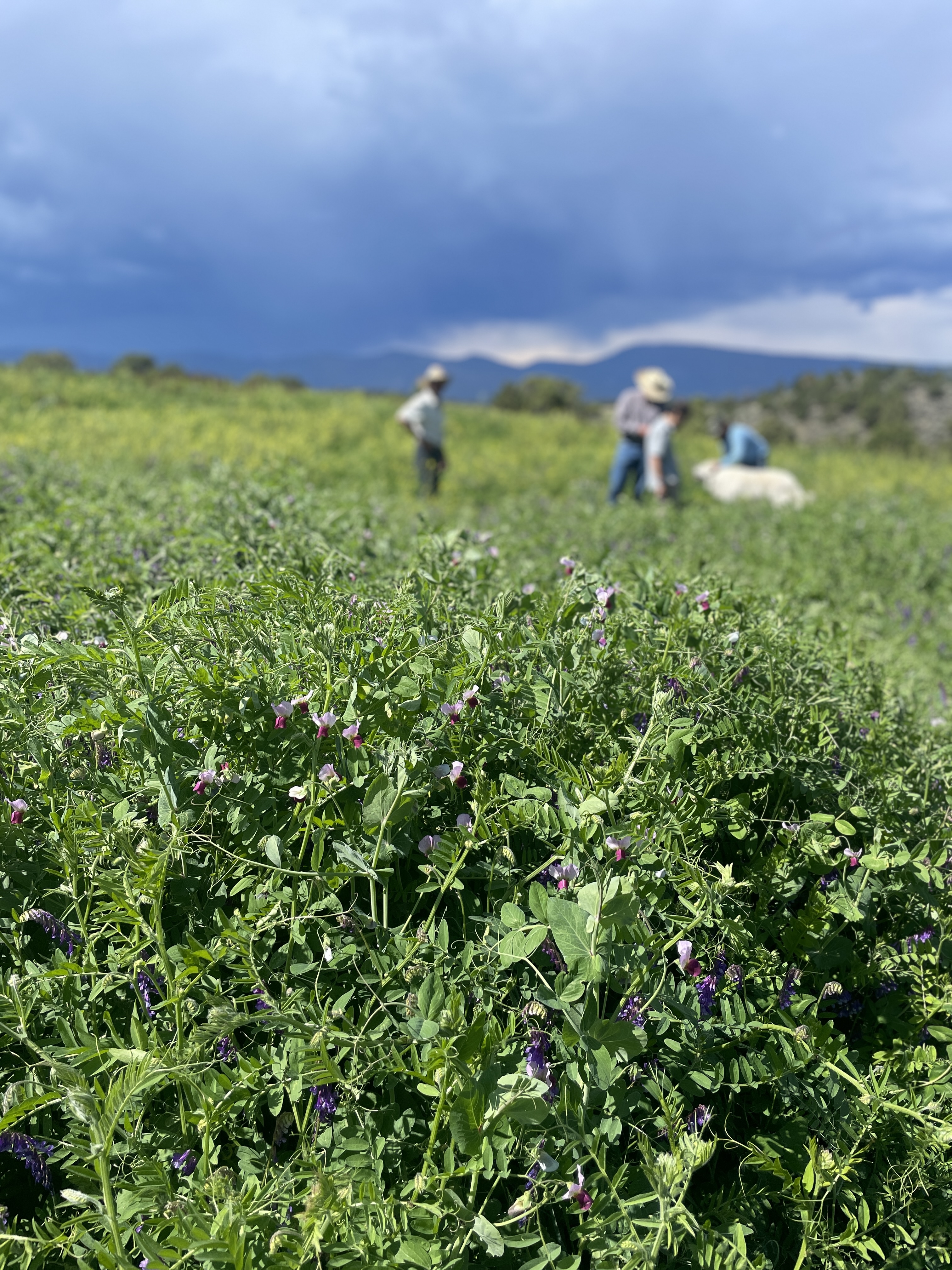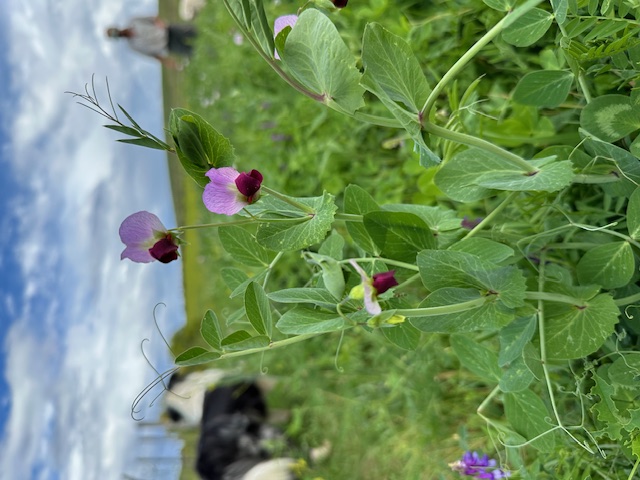Felix Tornare, a retired baker of 40 years, has taken on a career in ranching with his wife Sarah. Located in Garfield County, Felix and Sarah spent many years transforming Milagro Ranch while running a bakery. The Tornares saw a need to improve soil health for production, specifically on irrigated pastures, and to enhance ecosystem services on their property. They enrolled in the Colorado Soil Health Program through their conservation district, and the results have been a success to say the least.
 Felix and Sarah worked with multiple partners on the implementation of his no till drill, diverse cover crop mixes, irrigation projects, and rotational grazing at Milagro Ranch. It all started in the fall of 2020 with a small acreage seeding to try out various species on irrigated ground. The work has exploded from there, with the help of Emily Schwaller, manager of the Bookcliff, Mount Sopris, and Southside Conservation District, Philip Frank of Lifetime Ag, and others, who played a huge role in putting all the pieces together on Milagro Ranch and supporting Felix on his soil health journey.
Felix and Sarah worked with multiple partners on the implementation of his no till drill, diverse cover crop mixes, irrigation projects, and rotational grazing at Milagro Ranch. It all started in the fall of 2020 with a small acreage seeding to try out various species on irrigated ground. The work has exploded from there, with the help of Emily Schwaller, manager of the Bookcliff, Mount Sopris, and Southside Conservation District, Philip Frank of Lifetime Ag, and others, who played a huge role in putting all the pieces together on Milagro Ranch and supporting Felix on his soil health journey.
Being a baker, Felix emphasized how similar this process has been to his previous career.
"It's like putting together a recipe and assessing the end product, there is always room for adjustments. It's baking on the farm," Felix said
With this holistic approach Felix and Sarah not only saved money on fuel and labor to operate the ranch, but also drastically improved the health of their soil.
Dense cover crop and forage mixes now dominate his irrigated acres. Visitors can comfortably walk barefoot across fields, only to be surprised by the occasional softball sized turnip. Planting species like hairy vetch, turnips, clover, millet, orchard grass, brome, timothy, and more has completely changed haying and grazing practices on the ranch. Felix’s herd rotationally grazes on his irrigated acres, without the need for hay far into the winter season–sometimes holding off hay until early February.
Felix has saved money and time by harvesting only one cutting of forage from his irrigated ground. He also noticed a decrease in the compaction of his soil, increased water holding capacity, organic matter, and improved structure.
 "There is no need for fertilizer, or to plow or disk, and desirable species out compete the weeds," Felix said.
"There is no need for fertilizer, or to plow or disk, and desirable species out compete the weeds," Felix said.
Though Felix and Sarah have invested in equipment, irrigation infrastructure, and various seed mixes to transform the property, they cannot stress enough how integral cattle have been in this process. Felix loves to highlight the importance of livestock integration when it comes to soil health.
Cattle provide so much to the soil and overall function of the ground. Turning in seed from hoof action, cupping the soil surface for water storage, providing organic fertilizer inputs directly back into pastures; and ultimately course, upcycling these cover crop mixes into high value protein. Felix believes integrating livestock rotational grazing can be a resilient solution to volatile climate conditions.
Felix and Sarah are very encouraged by the presence of wildlife and productivity of their bee hives in just the first year, which they credit to the plant species diversity on the ranch. And they are impressed with the resilience of the forages on the property even with pressures from elk
"It is almost not even noticeable, there is plenty to go around," Felix said.
Felix has spent a significant amount of time sharing his successes and failures with other producers in the community. After years of being a full time baker and rancher, Felix is staying occupied not only caring for his property, but working to replicate his successes with fellow peers.
"The more people I can work with to get on board the better. It isn't just a benefit to their operations, but the overall ecosystem as well," Felix said.
The Colorado Soil Health Program connects producers like Sarah and Felix with their local conservation district, so together they can measure the health of the soil on their specific operation and put together a plan for how to employ additional soil health practices. The CSHP uses the STAR framework to evaluate the soil and help Colorado farmers and ranchers implement conservation practices that work for their operations.
Written by Reece Melton